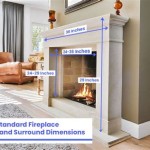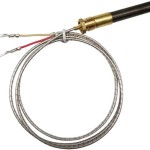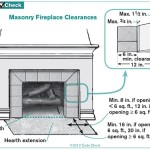Victorian Cast Iron Fireplaces: A Blend of Functionality and Ornamental Design
Victorian cast iron fireplaces represent a significant chapter in the history of home heating and interior design. Originating during the reign of Queen Victoria (1837-1901), these fireplaces moved beyond simple heating devices to become prominent focal points in the home. Their popularity stemmed from advancements in iron casting technology and a burgeoning middle class eager to express their prosperity and taste through ornate architectural elements. This article will explore the defining characteristics, historical significance, and enduring appeal of Victorian cast iron fireplaces.
The Victorian era witnessed a remarkable expansion in industrial production, particularly in iron foundries. This technological leap enabled the mass production of cast iron components, making fireplaces more accessible to a wider segment of the population. Previously, fireplaces would have been more artisanal, constructed of rarer, more expensive materials, or rendered in simpler, more utilitarian designs. The ability to mass produce complex designs in cast iron revolutionized the market, leading to a proliferation of styles and price points that catered to diverse economic situations.
The design of Victorian cast iron fireplaces was heavily influenced by the prevailing aesthetic trends of the time. The Victorian era was characterized by a romanticized view of the past, and this was reflected in the revival of various historical styles, including Gothic, Renaissance, and Rococo. Fireplaces incorporated elements such as intricate scrollwork, floral motifs, classical figures, and heraldic symbols. These decorative details were not merely aesthetic embellishments; they were intended to convey status, education, and cultural sophistication. The more elaborate the design, the more it alluded to the homeowner's success and discerning taste.
Understanding the Key Features of Victorian Fireplaces
Several key features define Victorian cast iron fireplaces, distinguishing them from earlier and later designs. These characteristics relate to both the construction methods and the stylistic choices which were prevalent during the period.
Firstly, the material itself, cast iron, played a crucial role. Cast iron is known for its durability and ability to withstand high temperatures, making it an ideal material for fireplaces. Its casting properties allow for intricate detailing, which was essential for the elaborate designs favored during the Victorian era. Unlike wrought iron, which requires extensive hammering and shaping, cast iron could be molded into complex forms using molds, drastically reducing production time and costs.
Secondly, the ornamentation of Victorian fireplaces is a defining characteristic. From delicate floral patterns to elaborate mythological scenes, the level of detail is often breathtaking. These embellishments were achieved through the use of molds and specialized casting techniques. Common motifs included acanthus leaves, grapevines, cherubs, and depictions of animals. The use of color was also important; many fireplaces were finished with enamel paint, often in black, but other colors such as deep reds, greens, and blues were also used to highlight the intricate details.
Thirdly, the overall structure of the fireplace usually included a firebox, a grate, and a mantelpiece. The firebox was designed to contain the fire, while the grate provided support for the fuel. The grate allowed air to circulate beneath the fuel, promoting efficient combustion. The mantelpiece, often made of wood, marble, or cast iron, served as a decorative frame around the fireplace opening. It provided a surface for displaying ornaments, photographs, and other personal items, further contributing to the fireplace's function as a focal point in the room. The entire assembly was carefully designed to maximize both heating efficiency and aesthetic appeal.
The Evolution of Victorian Fireplace Design
Victorian fireplace design did not remain static throughout the era; it evolved in response to changing tastes, technological advancements, and social trends. Early Victorian fireplaces (1837-1860) were often characterized by Gothic and Rococo influences, with pointed arches, elaborate scrollwork, and asymmetrical designs. These fireplaces were frequently large and imposing, reflecting the grandeur of the era.
Mid-Victorian fireplaces (1860-1880) saw a shift towards more classical and Renaissance-inspired designs. Symmetry, balance, and proportion became increasingly important. Fireplaces often featured pilasters, cornices, and pediments, mimicking the architectural elements of classical buildings. The use of marble and colored tiles became more common, adding a touch of luxury and sophistication.
Late Victorian fireplaces (1880-1901) reflected the growing influence of the Arts and Crafts movement. This movement emphasized handcrafted quality, natural materials, and simple, functional designs. Fireplaces became less ornate and more streamlined, with a focus on clean lines and geometric patterns. Tiles with floral or geometric designs were frequently used to decorate the firebox and mantelpiece. The use of copper and brass accents became more prevalent, adding warmth and richness to the overall design.
Furthermore, technological advancements also played a role in the evolution of Victorian fireplace design. The development of improved chimneys and flue systems allowed for more efficient combustion and reduced smoke emissions. This led to the design of smaller, more compact fireplaces that could be installed in a wider range of homes. The introduction of gas fireplaces in the late Victorian era offered a convenient and cleaner alternative to traditional coal-burning fireplaces, although they never fully replaced them.
Restoration and Preservation of Victorian Fireplaces
Many original Victorian cast iron fireplaces survive today, either in their original locations or as salvaged items. Restoring and preserving these fireplaces is essential for maintaining their historical and aesthetic value. The process typically involves several steps, beginning with a thorough assessment of the fireplace's condition. This includes identifying any cracks, rust, or missing parts. A professional restorer will then carefully clean the fireplace to remove dirt, paint, and rust. This may involve abrasive blasting, chemical stripping, or manual scraping, depending on the severity of the damage and the type of finish.
Once the fireplace is cleaned, any necessary repairs can be made. Cracks can be welded or filled with epoxy resin. Missing parts may be replaced with salvaged originals or reproductions. It is important to use materials and techniques that are compatible with the original construction of the fireplace. Using modern materials or methods can damage the fireplace or compromise its historical integrity.
After the repairs are complete, the fireplace can be refinished. This typically involves applying a new coat of paint or enamel. The choice of finish will depend on the original style of the fireplace and the homeowner's preferences. Some owners prefer to restore the fireplace to its original color, while others opt for a more contemporary look. It is important to use high-quality paints and enamels that are specifically designed for use on cast iron. These products will provide a durable and attractive finish that will protect the fireplace from rust and corrosion.
Finally, it is important to ensure that the fireplace is properly installed and maintained. This includes inspecting the chimney and flue to ensure that they are clean and unobstructed. A professional chimney sweep should be hired to clean the chimney on a regular basis. The fireplace should also be inspected annually for any signs of damage or deterioration. By taking these precautions, homeowners can ensure that their Victorian cast iron fireplace will continue to provide warmth and beauty for many years to come.
The enduring appeal of Victorian cast iron fireplaces lies in their combination of functionality, aesthetic beauty, and historical significance. These fireplaces serve as a reminder of a bygone era, when craftsmanship and attention to detail were highly valued. They add character and charm to any home, and they provide a tangible link to the past. Whether restored to their original glory or adapted to modern living, Victorian cast iron fireplaces remain an enduring symbol of Victorian ingenuity and design.

Carron Victorian Large Cast Iron Combination Fireplace Flames Co

Victorian Cast Iron Fireplace

Reclaimed Fireplace Wells Reclamation

Victorian Cast Iron Fireplace 4363mc Antique Co

Cast Iron Cosiness Designs For The Victorian Hearth National Archives Blog

Derby Cast Iron Fireplace Fireplaces

Tradition Cast Iron Fireplace Insert 38 Victorian

A Mid Victorian Cast Iron Fireplace Insert Lassco England S Prime Resource For Architectural Antiques Salvage Curiosities

Prince Cast Iron Insert Fireplace 37 Victorian

Victorian Cast Iron Fireplace Painted 4072b Antique Co
Related Posts








